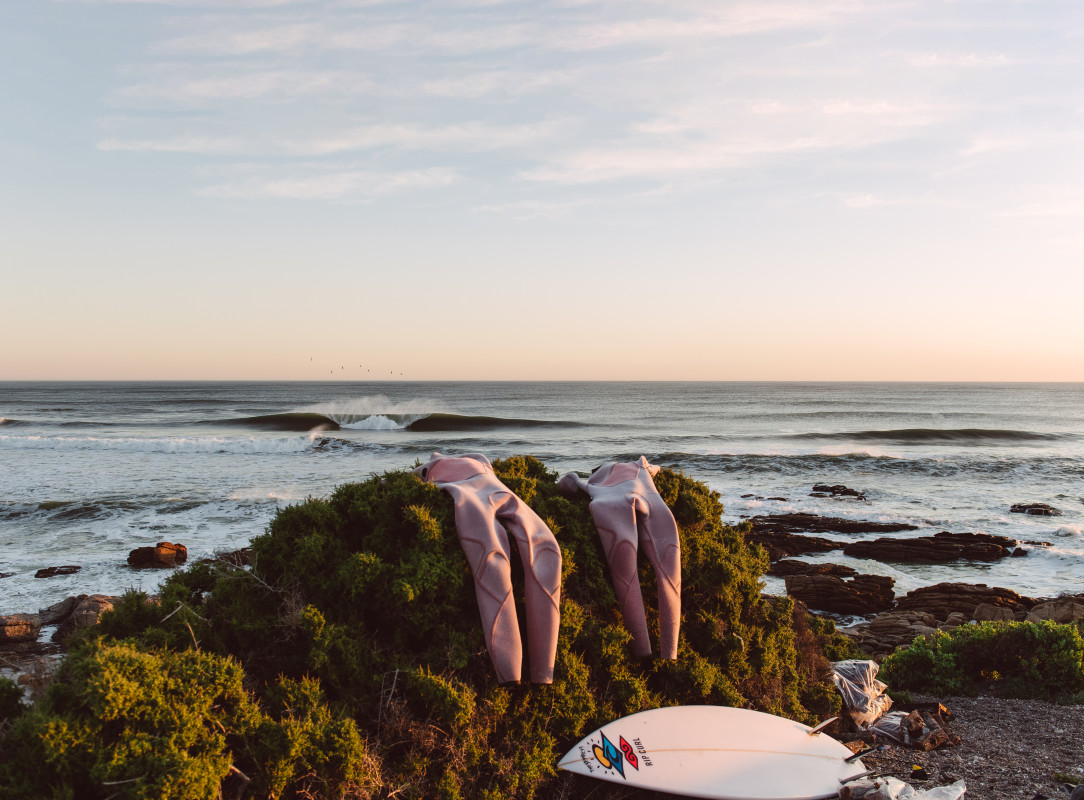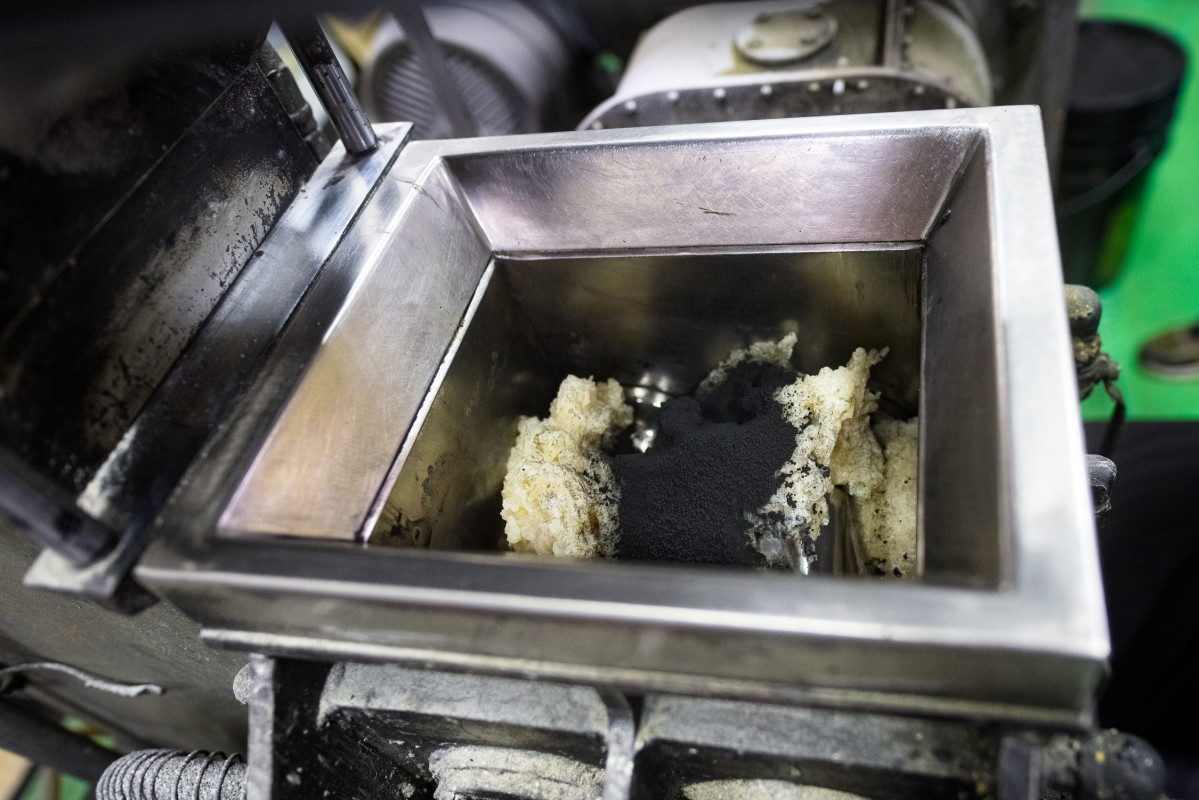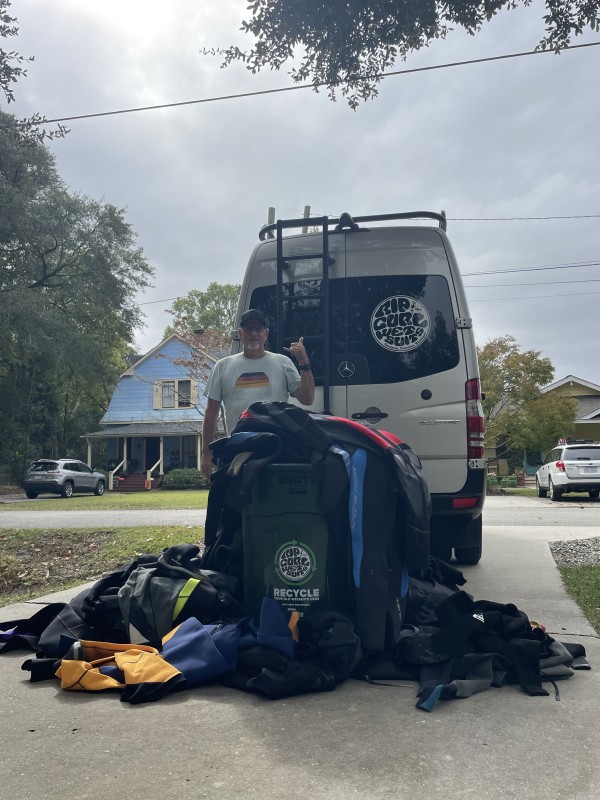
Photo: Rip Curl
How great are wetsuits? Next to long-range forecasting and commercial flights, the innovation of wearable neoprene has allowed surfers to find waves across the planet (and ride them without fear of freezing to death). Roughly 7 million wetsuits are sold annually and the global market is forecast to grow to $3.5 billion by 2033, according to Bloomberg.
Unfortunately, no neoprene lasts forever. With enough exposure to sun, salt and urine, the millimeters wear down and the stitching unstitches. While it’s easy to toss a suit into the landfill or let it take up space in a dark corner of the garage, there are better (and more environmentally conscious) ways to prolong its life.
Several nonprofits, for example, use secondhand suits for a variety of feel-good causes. AmpSurf teaches adaptive surfing programs to people with disabilities. ReSurf teaches sustainability and surfing to underprivileged and at-risk youth in Baja, San Diego and New York City.
Other organizations will repurpose the rubber into other products. Green Guru takes any wetsuit brand from participating outfitters around the world. In the US specifically, Lava Rubber, KASSIA+SURF and Reborn Rubber (wetsuits into wallets) do the same.
Perhaps coincidentally (or through market forces), two major surf brands have upped their wetsuit recycling game by working with a company that started out by repurposing old tires. Both Rip Curl and Patagonia have partnered with Colorado-based Bolder Industries to reuse the rubber from their steamers. Both brands are certified B-Corporations, meaning they must meet certain standards of performance, accountability, and transparency. Wetsuit recycling fits into that mold.
It all comes down to reusing carbon black, a petroleum-derived ingredient in neoprene. True to its name, carbon black gives wetsuits their strength and color. In an attempt to limit the production of virgin carbon black (which emits as much as 79 million metric tons of CO2 annually), Patagonia last year launched a first-of-its-kind effort to make new wetsuits from used Yulex suits. Patagonia will also repair any tears in the suit out of their headquarters in Ventura for free for the rest of eternity. It has reportedly repaired 6,000 of them since 2020.

Patagonia’s Surf Production Line Manager Hub Hubbard said it took about six years to get the “circular solution” in place. Now, Patagonia sends donated suits to Bolder Industries, which pulverizes them into a powder to extract the carbon black. The raw material is called BolderBlack and is then shipped to Patagonia’s wetsuit manufacturer, Sheico, an industry leader in wetsuit production. The material (which also has reclaimed carbon black from old tires) can be used to dye yarn or as an ingredient in wetsuit foam. Patagonia plans to put the BolderBlack suits on the market sometime in 2025. Bolder CEO and Founder Tony Wibbeler said the company is poised to work with more major surf brands to reclaim carbon black from used suits, though that process is still in the works.
“I think anyone who works with wetsuits has always looked for an end-of-life solution for them,” Hubbard said. “For us to remake this into a brand new product is a game changer.”

Photo: Patagonia
In Rip Curl’s case, wetsuits can be repaired in stores or donated and reused in products like yoga mats and children’s playground surfaces. The company’s Wetsuit Recycling Program runs stores in the United States, Australia, France, Portugal and Spain. Since its program launch in 2020, the company has collected an estimated 32,761 wetsuits. They take any brand, not just their own. A suit dropped off at a store or mailed to an HQ is taken to Bolder and broken down into raw materials and used for things like children’s playground surfaces and outdoor gyms. Plus, the donor gets a $25 voucher for their next purchase. Later this summer, Rip Curl plans to expand the program to select wholesale partners, not just Rip Curl stores.

“Our goal is to divert wetsuits from hitting landfills as best we can,” said PJ Connell, Rip Curl’s VP of Marketing and E-commerce. “The majority of wetsuits are made from nonrenewable resources…. And as much as we love them, they don’t biodegrade at the fastest rate. If we can give them a functional, second life, we’re heading in a better direction.”
Some surf brands aren’t just remaking well-worn suits. They’re repairing and re-selling the neoprene (and for a good cause). In the United Kingdom, several parties have partnered on a wetsuit repair effort that funds surf therapy sessions. In early June, the city of Cornwall and the Isles of Scilly Good Growth Programme donated £116,000 to fund a new wetsuit repair and retail system.
Organized by nonprofit The Wave Project and waste-management company SUEZ, the program brings wetsuit recycling bins to the Cornwall Council household waste recycling centers, which SUEZ manages. The discarded suits are brought to a repair workshop in Newquay, where teams clean and mend the wetsuits for resale at a charity store. Prices go between £20 to £60—a fraction of what new neoprene goes for these days. All the profits from the sale go to The Wave Project’s programs, which aim to improve the mental health of young people through surfing. Any wetsuits that can’t be fixed are upcycled into new products like bags, pillows and mats.
The bottom line is that there are a lot of places to put your old steamer that don’t involve your garage. Or a landfill.

